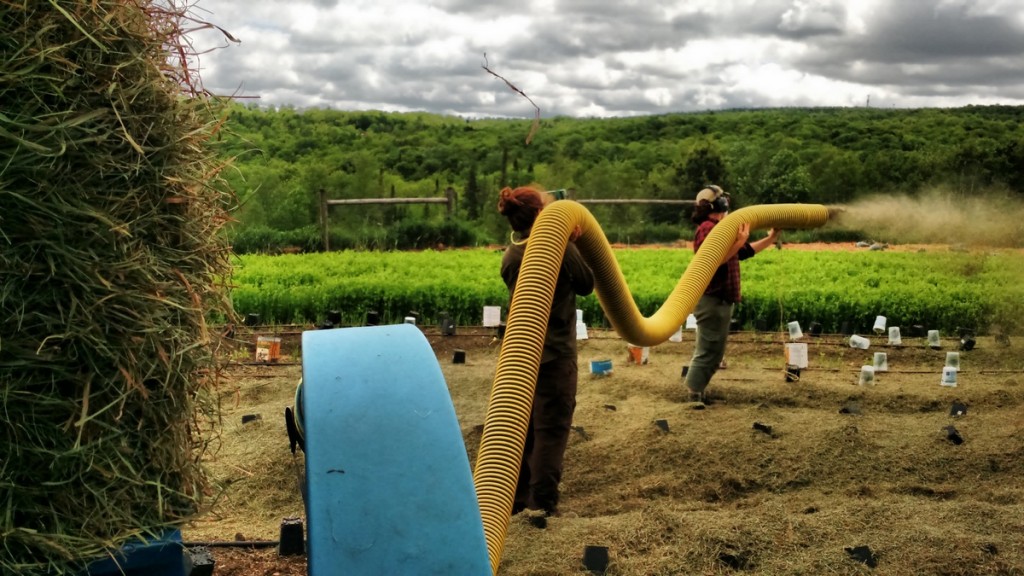National CSA Day celebrated last week how important the Community Supported Agriculture model is for many farms, ours included. Our farmstand and retail shoppers are important. Our committed year-round members are real, live symbiotes! (check out our Free-Choice Farmshares)
It turns out the relationships we cultivate within our human farm community mimic the relational magic of our plants and land. Thanks to Melissa Passanen & Seven Days for taking on the topic of farming and climate change this week and including our take on carbon farming.
To grow well plants actually feed the soil. Plants use sunlight and water to carry out photosynthesis, pulling carbon from the air and turn it into carbohydrates. And they pump a lot of those sugars into to soil. Plants feed the microorganisms because “the zillions” (our term of endearment for soil life), in turn break down the minerals and elemental goodness of soil, making nutrients available in plant digestible forms.

The plants feed the soil so that the soil biology can in turn feed the plants. Remineralized soils enable us to grow healthy plants that are capable of resisting pests and disease and can better tolerate frosts, extreme heat, excess moisture and drought. And food from these plants is more nutritious. All this is splendid and compelling. But it gets better!
Vibrant biologically active soils high in organic matter in turn are capable of storing more carbon and they can absorb water so that even big rain events can hold water on our farm instead of it running off. Thus we store water instead of seeing problems with runoff impacting water quality in our streams, rivers and lakes. AND the positive feedback loops and symbiosis do not end here!

spraying hay mulch
Our regenerative farming techniques are not only trying to maximize photosynthesis to improve yield, nutrition and soil remediation. We are purposefully assembling carbon in the soil. We mulch heavily with hay, straw and “ramial” wood chip from the tip ends of trees. We pay close attention to plant nutrition.

Our number one goal is to maximize photosynthesis so the plants can achieve their full potential pumping carbon from the atmosphere and transforming our soils AND sequestering carbon.

It is labor intensive but we not only hold the environmental costs of the food we grow, we also enable and enhance significant ecosystem services. We are rapidly increasing the depth of our topsoil and organic matter. Deep soil tests show increases in carbon and air down to a 12 inch depth in our soils. You don’t see this in large tillage systems.
Regenerative farming is carbon farming. Sure it is labor intensive but in reality labor is available all around the world. And it is a win-win-win for human health, soil health and it is a bite by bite, meal by meal way to rebalance carbon.
If all food was grown this way climate change would be reversed.
Beyond that, we work hard to limit or avoid nutrient run-off supporting a clean watershed and we hire local talent. Some say food from local, regenerative farms is more expensive. Is it?
Might regenerative agriculture bring us closer to reversing climate change? Farming to protect watersheds? And legitimate conversations about food as medicine?
Questions to ponder as you choose your food and support small farms.
